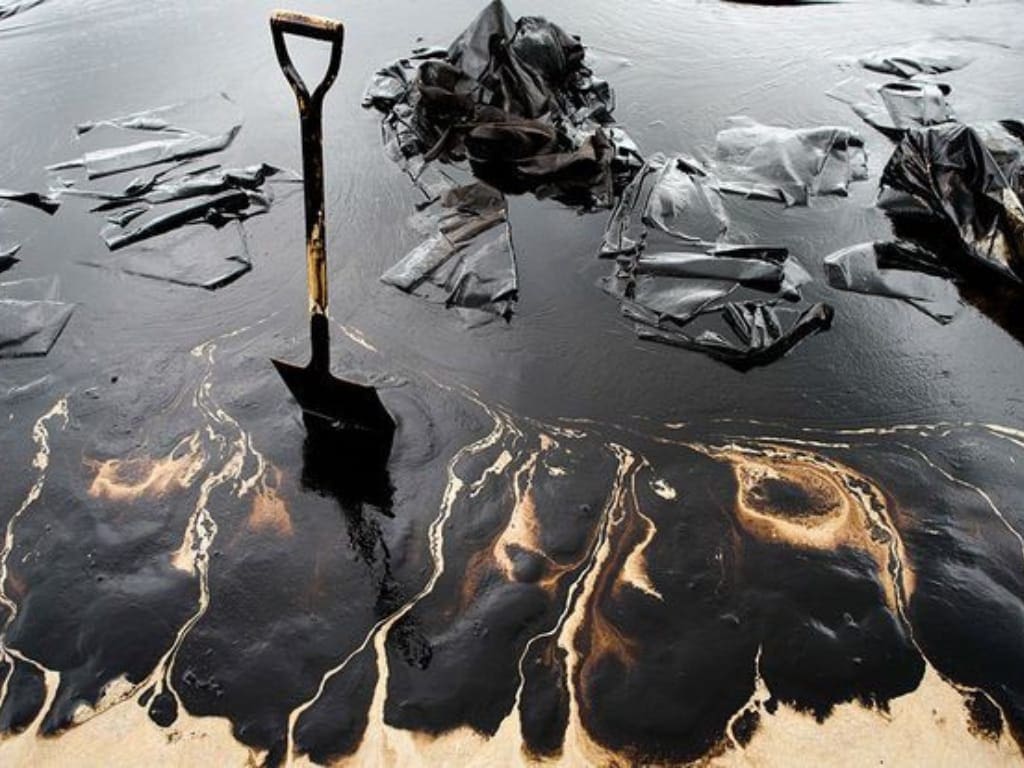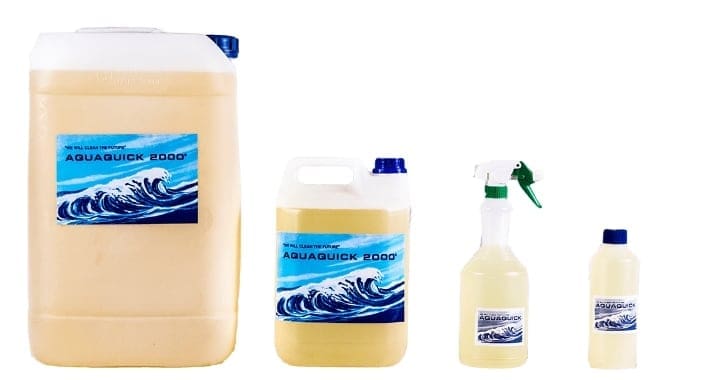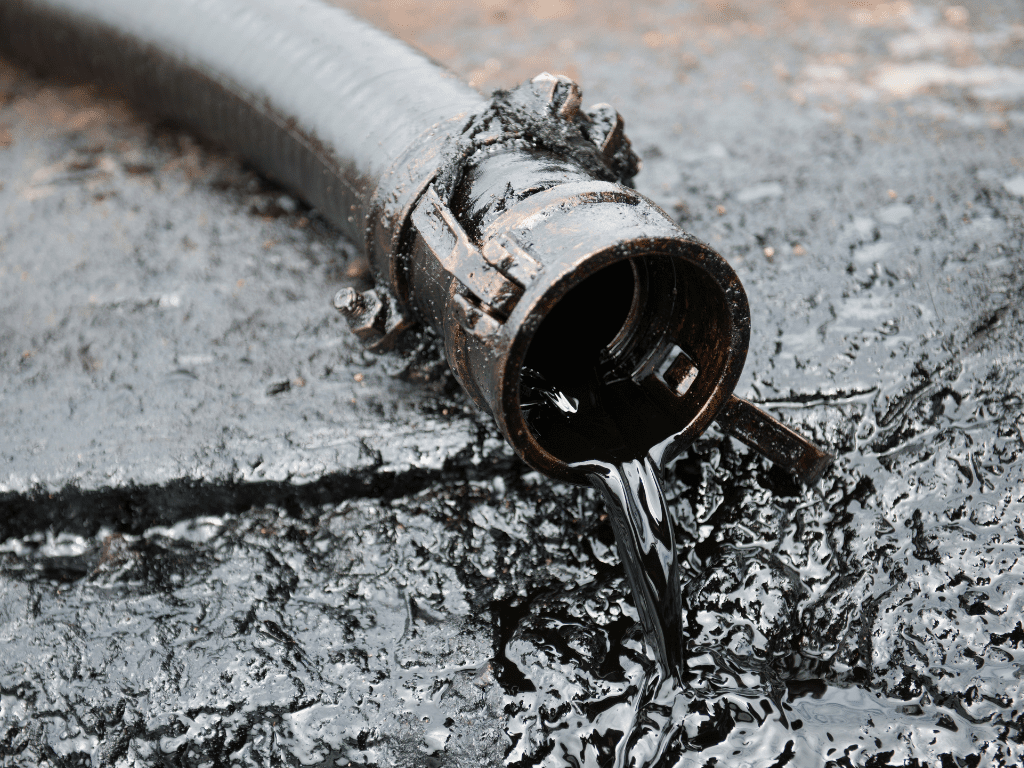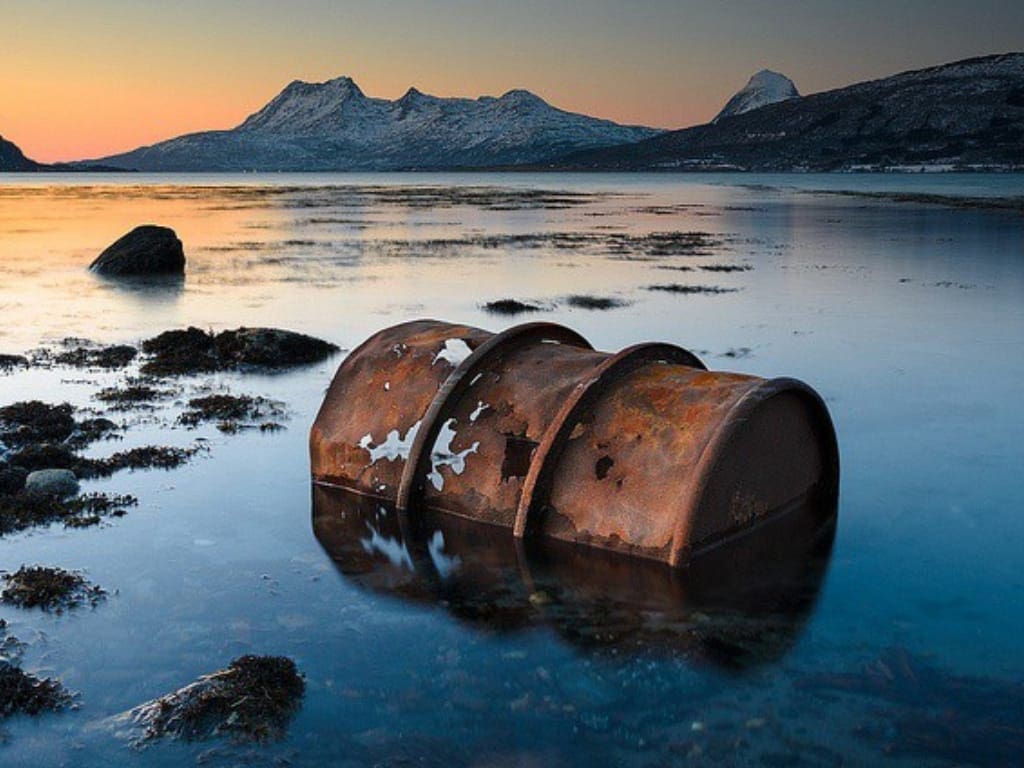I. Einleitung
Willkommen bei unserem umfassenden Leitfaden zur Bewältigung und Minderung der durch Ölunfälle verursachten Schäden. In diesem Artikel befassen wir uns mit wirksamen Strategien und Lösungen zur Bewältigung der ökologischen, wirtschaftlichen und sozialen Auswirkungen von Ölverschmutzungen. Wenn Sie hier sind, fragen Sie sich bestimmt, wie man die Schäden durch Ölverschmutzungen bewältigen kann. Eine innovative Lösung, auf die wir uns konzentrieren werden, ist AquaQuick, ein hochmodernes Produkt, das die Bekämpfung von Ölverschmutzungen verbessern soll. Fangen wir an!
II. Zum Verständnis Ölverschmutzungen
Ölverschmutzungen können durch verschiedene Faktoren verursacht werden, darunter Unfälle, Betriebsstörungen und Naturkatastrophen. Das Verständnis der Ursachen und Arten von Ölverschmutzungen ist für eine wirksame Bewältigung und Reaktion von entscheidender Bedeutung.
A. Ursachen von Ölverschmutzungen
- Unbeabsichtigtes Auslaufen von Öl aus Tankern: Unfälle während des Transports können zu großflächigen Ölaustritten führen, die eine erhebliche Gefahr für die Umwelt darstellen.
- Blowouts bei Ölbohrungen: Technisches Versagen bei Bohrungen, wie z. B. Blowouts, kann zu einer unkontrollierten Freisetzung von Öl in die Umwelt führen.
- Brüche von Pipelines: Eine veraltete Infrastruktur und unzureichende Wartung können zu Pipelinebrüchen führen, die Öl in terrestrischen und aquatischen Ökosystemen auslaufen lassen.
- Betriebsbedingte Einleitungen von Schiffen: Die unsachgemäße Entsorgung von ölhaltigen Abwässern und das Auslaufen von Treibstoff aus Schiffen tragen zur chronischen Verschmutzung und zu lokalen Ölunfällen bei.
B. Arten von Ölverschmutzungen
- Ölaustritte an der Oberfläche: Öl, das auf die Oberfläche von Gewässern wie Ozeanen, Flüssen und Seen gelangt und sichtbare Schwaden bildet, die sich schnell ausbreiten.
- Unterirdische Freisetzungen: Öl, das durch Unterwasserunfälle oder Lecks unter der Wasseroberfläche freigesetzt wird, was eine Herausforderung für die Erkennung und Eindämmung darstellt.
- Meeresverschmutzung: Ölverschmutzungen in der Meeresumwelt, die sich auf Küstengebiete, Meereslebewesen und Ökosysteme auswirken.
- Freisetzungen im Inland: Ölverschmutzungen auf dem Land oder in Binnengewässern, die die Bodenqualität, die Vegetation und die Grundwasserressourcen beeinträchtigen.

III. Ökologische und sozioökonomische Auswirkungen
Ölverschmutzungen haben verheerende Folgen für die Umwelt, die Wirtschaft und die Gesellschaft, so dass ein wirksames Management für die Schadensbegrenzung und die Wiederherstellung der betroffenen Gebiete entscheidend ist.
A. Umweltauswirkungen
Ölverschmutzungen stellen eine erhebliche Bedrohung für Ökosysteme, Meereslebewesen und natürliche Lebensräume dar und führen zu:
- Verschmutzung von Gewässern: Ölteppiche können Oberflächengewässer verunreinigen und in Sedimente einsickern, wodurch Wasserorganismen geschädigt und die Wasserqualität beeinträchtigt wird.
- Schädigung von Meereslebewesen: Ölexposition kann für Meerestiere tödlich sein und zu Erstickung, Vergiftung und Fortpflanzungsproblemen führen, was wiederum einen Rückgang der Populationen zur Folge hat.
- Schädigung der Lebensräume an der Küste: Öl bedeckt Strände, Sümpfe und Mangroven, wodurch Ökosysteme gestört und Pflanzen, Tiere und Nistplätze geschädigt werden.
- Langfristige ökologische Schäden: Ölrückstände verbleiben jahrelang in der Umwelt und beeinträchtigen die Nahrungsketten, die Artenvielfalt und die Widerstandsfähigkeit der Ökosysteme.
B. Sozioökonomische Auswirkungen
Ölverschmutzungen haben weitreichende Folgen für die Gemeinden, die Wirtschaft und die Gesundheit der Bevölkerung und führen zu:
- Verlust von Lebensgrundlagen: Die Fischerei- und Tourismusbranche erleidet durch die Verunreinigung von Meeresfrüchten, Stränden und Erholungsgebieten erhebliche Verluste.
- Wirtschaftlicher Abschwung: Die Beseitigung von Ölverschmutzungen und die Wiederherstellungsmaßnahmen verursachen hohe Kosten, die die lokale Wirtschaft und die öffentlichen Haushalte belasten.
- Gesundheitsrisiken: Die Exposition gegenüber Öldämpfen, Chemikalien und verunreinigtem Wasser birgt Gesundheitsrisiken für Anwohner und Aufräumarbeiten, die zu Atembeschwerden, Hautkrankheiten und psychischem Stress führen.
- Schädigung des kulturellen Erbes: Ölverschmutzungen können Kulturstätten, traditionelle Lebensgrundlagen und indigene Gemeinschaften schädigen und so die kulturelle Identität und das kulturelle Erbe untergraben.
Wirksame Strategien zur Bekämpfung von Ölunfällen sind unerlässlich, um Umweltschäden und sozioökonomische Verluste zu minimieren. Im nächsten Abschnitt werden wir innovative Lösungen, einschließlich AquaQuick, zur Bewältigung der Herausforderungen bei der Beseitigung und Eindämmung von Ölunfällen untersuchen.
IV. Techniken zur Bekämpfung von Ölunfällen
Um die durch Ölverschmutzungen verursachten Schäden wirksam zu bewältigen und zu begrenzen, ist eine Kombination aus Vorbeugungs-, Eindämmungs- und Reinigungsmaßnahmen unerlässlich. Im Folgenden werden einige wichtige Strategien für den Umgang mit Ölverschmutzungen erläutert:
A. Strategien der Prävention
- Verschärfte Sicherheitsvorschriften: Die Einführung strenger Sicherheitsstandards und -protokolle für den Betrieb, den Transport und die Lagerung von Öl kann das Risiko von Ölunfällen verringern.
- Einsatz fortschrittlicher Technologien: Der Einsatz modernster Überwachungssysteme, Leckageerkennungs-Technologien und automatischer Absperrventile kann dazu beitragen, potenzielle Leckagen zu verhindern und umgehend darauf zu reagieren.
- Einhaltung von Umweltstandards: Die Einhaltung von Umweltvorschriften und bewährten Praktiken kann die Wahrscheinlichkeit von Ölverschmutzungen minimieren und deren Auswirkungen auf Ökosysteme und Gemeinden abmildern.
B. Methoden zur Eindämmung und Wiederherstellung
- Sperren und Barrieren: Der Einsatz von schwimmenden Sperren und Barrieren rund um die Unfallstelle kann dazu beitragen, die Ausbreitung des Öls einzudämmen und eine weitere Verschmutzung von Gewässern und Küsten zu verhindern.
- Abschäumer und Vakuumsysteme: Durch den Einsatz von Abschöpfvorrichtungen und Vakuumsystemen kann Öl von der Wasseroberfläche entfernt werden, was die Rückgewinnung erleichtert und Umweltschäden verringert.
- Sorbentien und Dispersionsmittel: Der Einsatz von Absorptions- und Dispersionsmitteln kann dazu beitragen, Ölteppiche zu zersetzen, die Reinigungseffizienz zu erhöhen und das Verbleiben von Öl in der Umwelt zu minimieren.
C. Schutz und Sanierung der Küstenlinie
- Mechanische Säuberungsmethoden: Durch den Einsatz mechanischer Geräte wie Schaufeln, Staubsauger und Hochdruckreiniger kann Öl von Stränden, Felsen und Vegetation entfernt und die betroffenen Küsten wiederhergestellt werden.
- Biologische Sanierungsverfahren: Die Nutzung natürlicher Prozesse, wie z. B. biologische Sanierung und mikrobieller Abbau, kann den Abbau von Ölverunreinigungen in Boden und Wasser beschleunigen und so die Erholung des Ökosystems fördern.
- Überwachung und Bewertung: Eine gründliche Überwachung und Bewertung der Auswirkungen von Ölunfällen auf Küstenökosysteme und wild lebende Tiere ist für eine fundierte Entscheidungsfindung und gezielte Sanierungsmaßnahmen unerlässlich.
V. Einführung in AquaQuick als innovative Lösung
AquaQuick ist ein revolutionäres Produkt, das die Bekämpfung von Ölunfällen verbessert, indem es Ölverschmutzungen schnell einkapselt und von der Wasseroberfläche entfernt. Seine fortschrittliche Formel verbindet sich effektiv mit Ölmolekülen und bildet schwimmfähige, gelartige Aggregate, die leicht abgeschöpft werden können, um Umweltschäden zu minimieren und die Aufräumarbeiten zu vereinfachen. Die Vielseitigkeit und Effizienz von AquaQuick machen es zu einem wertvollen Hilfsmittel bei der Minderung von Schäden durch Ölverschmutzungen und dem Schutz von Meeresökosystemen und Küstengemeinden.
A. Anwendung von AquaQuick
- Schnelle Einkapselung von Öl: AquaQuick kapselt das Öl bei Kontakt schnell ein und verwandelt es in eine handhabbare, gelartige Substanz, die leicht von der Wasseroberfläche entfernt werden kann.
- Schwimmfähige Eigenschaften: Die schwimmfähige Eigenschaft von AquaQuick sorgt dafür, dass es auf der Wasseroberfläche verbleibt, was eine effiziente Entfernung erleichtert und verhindert, dass das Öl absinkt oder sich weiter ausbreitet.
- Kompatibilität mit vorhandener Ausrüstung: AquaQuick kann mit herkömmlichen Skimmern, Staubsaugern und Absperrungen verwendet werden und erhöht deren Effektivität bei der Beseitigung von Ölunfällen.
B. Vorteile von AquaQuick
- Umweltverträglichkeit: Die ungiftige und biologisch abbaubare Formel von AquaQuick minimiert die Umweltbelastung und verringert den ökologischen Fußabdruck von Ölunfall-Reinigungsmaßnahmen.
- Kosteneffizienz: Durch die Beschleunigung der Ölbeseitigung und die Vereinfachung der Reinigungsarbeiten trägt AquaQuick dazu bei, die Reinigungskosten zu senken und die langfristigen wirtschaftlichen Verluste im Zusammenhang mit Ölunfällen zu minimieren.
- Vielseitigkeit: AquaQuick eignet sich für verschiedene Szenarien von Ölverschmutzungen, einschließlich Ölverschmutzungen auf See, im Binnenland und bei Industrieunfällen, was es zu einer vielseitigen Lösung für die Bekämpfung von Ölverschmutzungen macht.

VI. Staatliche Vorschriften und internationale Zusammenarbeit
Ein wirksames Ölunfallmanagement erfordert einen soliden Rechtsrahmen und internationale Zusammenarbeit, um eine rechtzeitige Reaktion und Koordinierung zwischen den verschiedenen Rechtsordnungen zu gewährleisten. Lassen Sie uns die wichtigsten Aspekte staatlicher Vorschriften und internationaler Zusammenarbeit bei der Bekämpfung von Ölunfällen untersuchen:
A. Überblick über den Rechtsrahmen
- Nationale Gesetze und Vorschriften: Viele Länder haben Gesetze und Verordnungen zur Verhinderung von Ölunfällen, zur Reaktion darauf und zur Haftung erlassen, in denen die Verantwortlichkeiten der Beteiligten in der Industrie und der Regierungsbehörden festgelegt sind.
- Internationale Konventionen und Abkommen: Internationale Organisationen wie die Internationale Seeschifffahrtsorganisation (IMO) und das Umweltprogramm der Vereinten Nationen (UNEP) haben Konventionen und Protokolle wie das Internationale Übereinkommen über Vorsorge, Bekämpfung und Zusammenarbeit bei Ölverschmutzungen (OPRC) entwickelt, um die weltweite Zusammenarbeit bei der Verhütung und Bekämpfung von Ölunfällen zu fördern.
B. Die Rolle der staatlichen Stellen
- Umweltschutzbehörden: Nationale und regionale Umweltbehörden spielen eine entscheidende Rolle bei der Überwachung der Bereitschafts- und Abhilfemaßnahmen bei Ölunfällen, der Durchführung von Risikobewertungen und der Durchsetzung von Umweltvorschriften.
- Küstenwache und Schifffahrtsbehörden: Die Küstenwache und die Schifffahrtsbehörden sind für die Durchsetzung der Vorschriften zur Sicherheit im Seeverkehr und zur Verhütung von Verschmutzungen, für die Überwachung und die Koordinierung der Notfallmaßnahmen bei Ölunfällen zuständig.
C. Gemeinsame Anstrengungen der Nationen
- Informationsaustausch und Koordination: Die Einrichtung von Mechanismen für den Austausch von Echtzeit-Informationen, Daten und Ressourcen zwischen den betroffenen Ländern und internationalen Organisationen erleichtert die koordinierte Reaktion und die Zuweisung von Ressourcen bei Ölkatastrophen.
- Gemeinsame Übungen und Schulungsprogramme: Die Durchführung gemeinsamer Übungen, Simulationen und Initiativen zum Kapazitätsaufbau verbessert die Bereitschaft und Interoperabilität von Einsatzteams und fördert die effektive Zusammenarbeit und Koordinierung von Maßnahmen.
Staatliche Vorschriften und internationale Zusammenarbeit sind wesentliche Säulen des Ölunfallmanagements, die eine koordinierte und wirksame Reaktion zur Minderung von Umweltschäden und zum Schutz von Küstengemeinden gewährleisten.
VIII. Fallstudien über größere Ölunfälle
Die Untersuchung früherer Ölkatastrophen bietet wertvolle Einblicke in die Herausforderungen, Auswirkungen und Reaktionsstrategien im Zusammenhang mit solchen Katastrophen. Lassen Sie uns einige bemerkenswerte Fallstudien großer Ölunfälle untersuchen:
A. Exxon Valdez Ölpest (1989)
Der Ölunfall der Exxon Valdez, einer der größten Ölunfälle in der Geschichte der USA, ereignete sich, als der Öltanker Exxon Valdez im Prince William Sound in Alaska auf Grund lief. Durch die Ölpest gelangten etwa 11 Millionen Liter Rohöl in die unberührten Gewässer und verursachten umfangreiche Umweltschäden an marinen Ökosystemen, Küstenlebensräumen und der Tierwelt. Bei den Säuberungsarbeiten wurden Sperren, Skimmer und Dispersionsmittel eingesetzt, aber die rauen Umweltbedingungen und die abgelegene Lage behinderten die Wirksamkeit der Maßnahmen. Der Vorfall machte deutlich, dass die Sicherheitsvorkehrungen für Tankschiffe, die Bereitschaft zur Bekämpfung von Ölunfällen und die behördliche Aufsicht verbessert werden müssen.
B. Deepwater Horizon Ölpest (2010)
Die Deepwater-Horizon-Ölpest, auch bekannt als BP-Ölpest, war eine der größten Umweltkatastrophen der Geschichte. Sie ereignete sich, als die Bohrinsel Deepwater Horizon im Golf von Mexiko explodierte und über einen Zeitraum von 87 Tagen Millionen von Barrel Öl freisetzte. Der Ölteppich hatte verheerende Auswirkungen auf das Leben im Meer, die Küstengemeinden und die Wirtschaft an der Golfküste, mit langfristigen Folgen für Ökosysteme und Lebensgrundlagen. Bei den Aufräumarbeiten kamen Dispersionsmittel, kontrollierte Verbrennungen und mechanische Abschöpfung zum Einsatz, doch das Ausmaß und die Komplexität der Ölpest stellten die Eindämmungs- und Bergungsarbeiten vor erhebliche Herausforderungen. Der Vorfall machte deutlich, wie wichtig strenge Sicherheitsvorschriften, die Vorbereitung auf Notfälle und die Verantwortung der Unternehmen bei Offshore-Bohrungen sind.
C. Beispiele für erfolgreiches Management von Ölunfällen
Trotz der Herausforderungen, die Ölverschmutzungen mit sich bringen, gab es Fälle, in denen erfolgreiche Gegenmaßnahmen und Bergungsmaßnahmen durchgeführt wurden. Der Nordsee-Bravo-Blowout im Jahr 1977 hat beispielsweise gezeigt, wie wirksam Bohrlochkontrolltechniken und schnelle Reaktionsmaßnahmen bei der Eindämmung und Eindämmung von Offshore-Ölbohrlochausbrüchen sind. Auch die kuwaitischen Ölbrände nach dem Golfkrieg 1991 wurden durch koordinierte internationale Anstrengungen erfolgreich gelöscht, was die Bedeutung von Zusammenarbeit und Innovation bei der Bewältigung großer Umweltkatastrophen unterstreicht.

X. Zukünftige Richtungen im Management von Ölunfällen
Angesichts der Herausforderungen, die Ölverschmutzungen mit sich bringen, bieten laufende Forschungsarbeiten, technologische Innovationen und politische Entwicklungen vielversprechende Möglichkeiten zur Verbesserung der Strategien zur Bekämpfung von Ölverschmutzungen. Lassen Sie uns einige wichtige Trends und zukünftige Richtungen in diesem Bereich untersuchen:
A. Fortschritte in der Spill Response Technologie
- Fernerkundungs- und Überwachungssysteme: Der Einsatz von Satellitenbildern, Luftdrohnen und Unterwassersensoren ermöglicht die Überwachung von Ölverschmutzungen in Echtzeit und verbessert die Möglichkeiten zur Früherkennung und Reaktion.
- Robotik und autonome Fahrzeuge: Der Einsatz von Robotersystemen wie unbemannten Überwasserschiffen (USVs) und autonomen Unterwasserfahrzeugen (AUVs) ermöglicht effiziente Kartierungs-, Überwachungs- und Säuberungsmaßnahmen bei Ölunfällen in gefährlichen oder unzugänglichen Umgebungen.
B. Forschungsprioritäten für die Minderung der Auswirkungen von Ölunfällen
- Bioremediation und ölfressende Mikroben: Die Erforschung natürlicher biologischer Abbauprozesse und die Entwicklung von Bioaugmentationstechniken können die Wirksamkeit mikrobieller Sanierungsstrategien beim Abbau von Ölverunreinigungen verbessern.
- Neuartige Materialien für die Eindämmung und Beseitigung von Ölverschmutzungen: Die Erforschung innovativer Materialien wie Sorbentien auf der Grundlage von Nanomaterialien und biologisch abbaubaren Polymeren bietet potenzielle Lösungen für wirksamere und umweltfreundlichere Methoden zur Beseitigung von Ölunfällen.
C. Integration von Überlegungen zum Klimawandel
- Bewertung der Anfälligkeit von Ölinfrastrukturen: Die Bewertung der Anfälligkeit von Öleinrichtungen, Pipelines und Küsteninfrastruktur gegenüber klimabedingten Gefahren wie dem Anstieg des Meeresspiegels und extremen Wetterereignissen dient als Grundlage für Anpassungsmaßnahmen und Risikomanagementstrategien.
- Resilienzplanung für Küstengemeinden: Die Entwicklung von Resilienzplänen und Anpassungsstrategien hilft den Küstengemeinden, die Auswirkungen von Ölunfällen und des Klimawandels abzumildern und eine nachhaltige Entwicklung und den Schutz der Ökosysteme zu gewährleisten.
XI. Schlussfolgerung
Zusammenfassend lässt sich sagen, dass ein wirksames Ölunfallmanagement für die Minimierung von Umweltschäden, den Schutz von Meeresökosystemen und den Schutz der menschlichen Gesundheit und Lebensgrundlagen unerlässlich ist. Durch die Umsetzung umfassender Strategien, die Nutzung innovativer Technologien und die Förderung der internationalen Zusammenarbeit können wir unsere Bereitschaft und Reaktionsfähigkeit verbessern, um die Schäden durch Ölunfälle zu mindern. AquaQuick stellt mit seiner fortschrittlichen Formulierung und schnellen Wirkung eine vielversprechende Lösung für die Beseitigung und Eindämmung von Ölunfällen dar und trägt zu einer nachhaltigeren und widerstandsfähigeren Zukunft bei.














